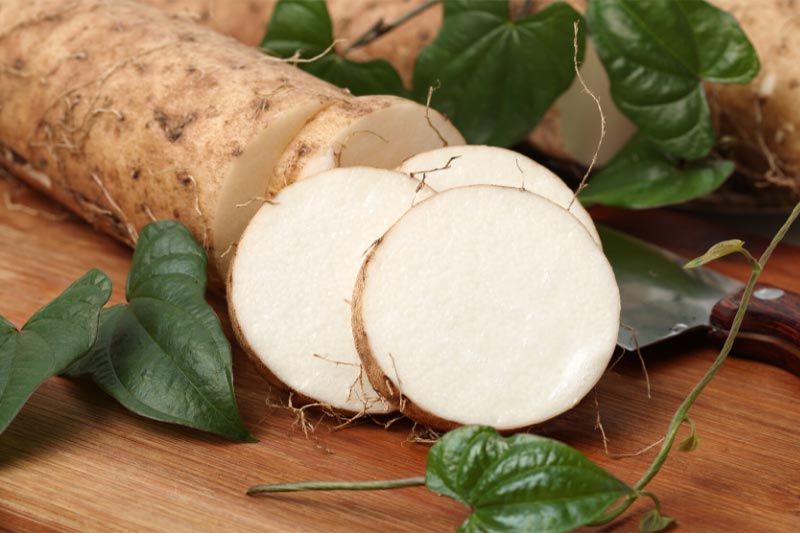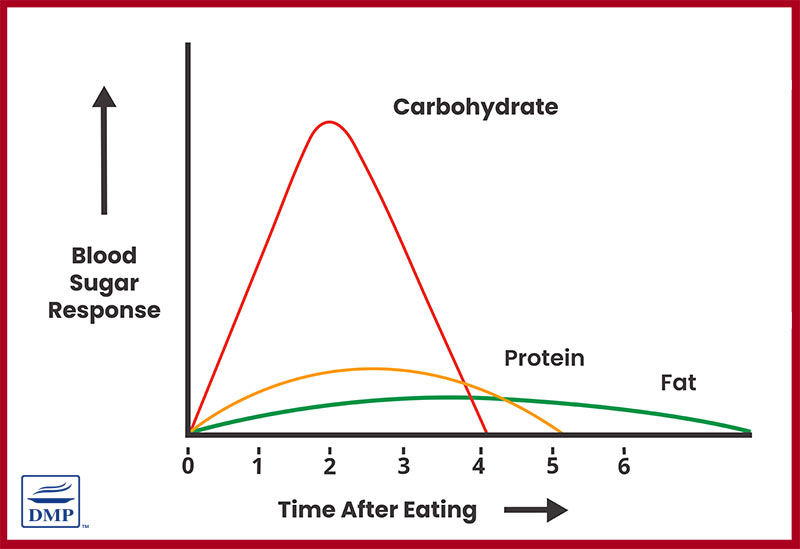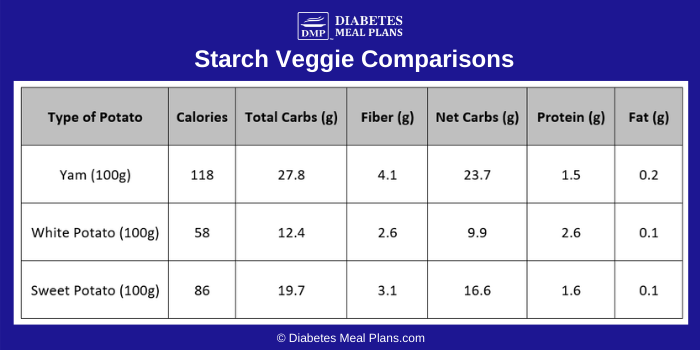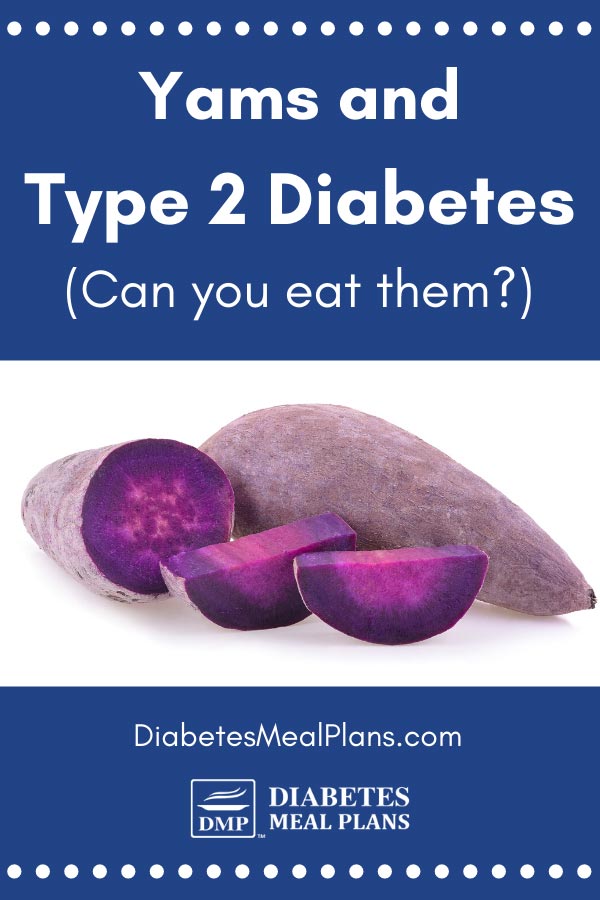Table of Contents[Hide][Show]
Yams are a starchy veggie that is often confused with sweet potatoes.
The truth is, they’re not the same thing, but they do have some similarities in terms of nutrition.
Keep reading if you want to learn all about yams: what they are, how they compare to other potatoes, and most importantly, how they will affect your blood sugar and A1c.

What is a Yam?
A yam is a starchy, tuber vegetable that is native to Africa and Asia as well as other tropical regions. Amazingly, there are about 600 different species of yams out there.
Yams can be as small as regular potatoes or grow to be a whopping five feet long! Today, yams can be grown around the world, but West Africa is still where most yam crops are grown.
Most vegetables labeled as a “yam” in US supermarkets are actually just a variety of sweet potato. And although many use the terms “yam” and “sweet potato” interchangeably, they are actually different.
Sweet potatoes are known for their bright orange coloring in contrast to many yams which are brown with a rough textured skin and pale flesh. Some yams are even purple in skin and flesh color.
Another difference between your average sweet potato and a true yam is in the nutrition; sweet potatoes contain more sugars and contain more vitamin A than yams do.
And since we’re on the topic of nutrition, let’s talk about exactly what’s in a yam.
Yam Nutrition Facts
A 100g serving of yam (about ¾ cup) contains these macronutrients:
- Calories: 118
- Carbohydrates: 27.8g
- Protein: 1.5g
- Fat: 0.2g
- Dietary Fiber: 4.1g
Yams are also a good source of vitamin C, potassium, manganese, and vitamin B6. Yams also contain a decent amount of vitamin B1 and copper.
Despite the vitamins and minerals they contain, yams have one major downfall—they contain a high amount of carbohydrates.
Carbohydrates are the nutrient that influences blood sugar levels more than any other nutrient.

You can achieve better blood sugar control by reducing the amount of carbs you eat, which usually means cutting out starchy veggies like yams (and other tubers).
Our recommendation is to consume a maximum of 25 grams of carbs at each meal. Abiding my this recommendation is a great way to improve your day-to-day blood sugar stability and, eventually, you’ll see your A1c drop as well.
Now looking at the 27.8g of carbohydrates in a serving of yams, you can see that even with the fiber content deducted, the amount of net carbs is over the ideal amount you should eat for an entire meal!
And just think—you’re not likely to eat a yam on it’s own, so once you add other foods to your plate, you can see how that yam is going to add a significant amount of carbs to your meal.
Why not replace yam with a lower carb vegetable like cauliflower, rutabaga, or carrots?
Yam vs. Potato Comparison
We don’t encourage you to eat any type of potato or tuber because they all have the same thing in common—they are quite high in carbs and we already explained why higher carb foods are best avoided.
As you can see in the table below, compared to other tuberous vegetables, such as a white potato and sweet potato, the yam contains the highest amount of carbohydrates.

Another thing to take into consideration when selecting foods to avoid is glycemic index (GI).
The glycemic index of yams is lower than that of both white and sweet potatoes.
Depending on the type of yam and how it is prepared, the GI ranges from 35-74. Potatoes, on the other hand, have a GI that ranges from about 65-98 and sweet potatoes range from 44-94.
Foods with a higher glycemic index cause higher spikes in blood glucose levels so you could figure that yam may not spike blood glucose levels as much as a sweet potato or white potato.
However, that’s just the immediate “spike” that would occur after eating, and there is more to consider.
The overall amount of carbs a yam contains is still going to end up in your bloodstream and have an impact on your levels compared to consuming a lower carb vegetable like cauliflower.
Both GI and net carbohydrates need to be taken into account, and both yams and potatoes miss the mark pretty badly in both of these areas.

Research on Yams and Type 2 Diabetes
The potential benefits of yams with regards to diabetes in humans has not been extensively studied. Most of the studies have been conducted using rats and mice.
One study suggested the Chinese yam (Diocorea batatasto) contains compounds that may help lower blood glucose levels. However, this research would not translate effectively to humans so we can’t say what the result would be for your average diabetic.
Another study showed that extract from the Chinese yam decreased insulin resistance in rats that were fed a high fat diet.
Lastly, a study found that rats given higher amounts of purple yam extract showed reduced appetites, greater weight loss, and improved blood sugar control, compared with a control group.
The bioactive compounds, allatoin and sapogenin along with yam extract are thought to be agents that contribute to the anti-diabetic effects found in the Chinese yam. These substances may exhibit anti-inflammatory effects, improve kidney and liver function, and improve the function of β-cells which in-turn helps manage insulin and glucose levels.
However, the evidence for yams is in rats and mice, which really doesn’t tell us about the influence of these substances in humans. Plus, using an extract of yam to test various factors, is much different than consuming the entire food with all of the carbohydrates intact.
What we do know is that foods high in carbohydrates influence blood sugar and A1c levels the most in humans.
Research shows that when people with diabetes restrict carbohydrates they get better results with blood sugar, A1c, weight, cholesterol and often reduce their medication requirements as well.
So we recommend that you’re best to avoid eating yams altogether.
Conclusion
Although yams are a nutrient dense food and have some beneficial compounds, they are not suitable diabetics. This is simply due to the fact that they contain an excess amount of carbohydrates.
On average, we encourage around 50-80 grams of total carbohydrates per day. If you were to consume 1 cup of yams at a meals you would be eating around 41 grams of carbohydrates, and that’s half a day’s worth of carbs!
If you’re trying to treat your diabetes naturally through diet, your main objective is to obtain and maintain blood sugar levels as close to normal as possible. And to do that it’s far better to stick to eating lower carb vegetables that won’t raise your blood sugar levels as much as a vegetable like yam.
And if you’re worried about missing out on the nutrients like vitamins C, A, and B by missing out on potatoes and yams, there’s nothing to fear.
There are plenty of low carb, non-starchy vegetables that will supply those exact same nutrients.

Leave a Reply